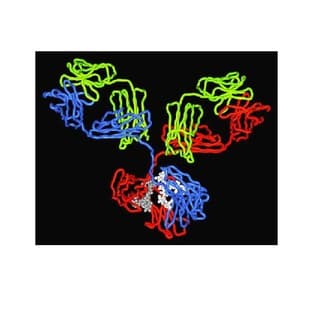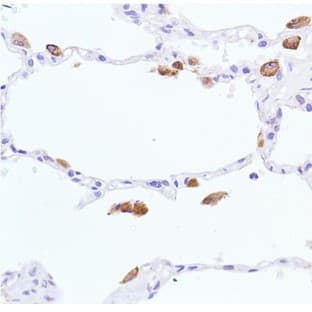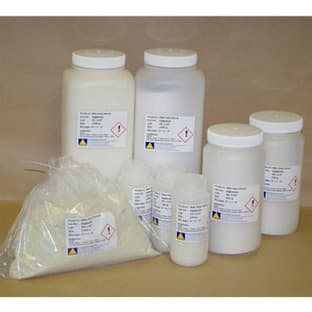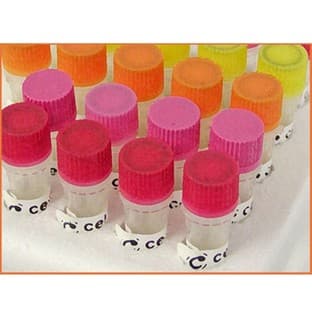
Supplier:
BOSTER IMMUNOLEADERCat no: PA1799
Polyclonal Anti-Vitronectin/VTN
Prices direct from BOSTER IMMUNOLEADER
Quick response times
Exclusive Biosave savings/discounts
SPECIFICATIONS
Price
200.00 USD
Catalog Number
PA1799
Size
100ug/vial
Applications
WB
Reactivities
Hum, Mouse, Rat
Form
Lyophilized
Format
Each vial contains 5mg BSA, 0.9mg NaCl, 0.2mg Na2HPO4, 0.05mg Thimerosal, 0.05mg NaN3.
Gene Id
VTN
References
1. Fink, T. M., Jenne, D. E., Lichter, P.The human vitronectin (complement S-protein) gene maps to the \ncentromeric region of 17q.Hum. Genet. 88: 569-572, 1992.\n2. Kubota, K., Katayama, S., Matsuda, M., Hayashi, M.Three types of vitronectin in human blood.Cell \nStruct. Funct. 13: 123-128, 1988.\n3. Preissner, K. T., Heimburger, N., Anders, E., Muller-Berghaus, G.Physicochemical, immunological and \nfunctional comparison of human S-protein and vitronectin: evidence for the identity of both plasma \nproteins.Biochem. Biophys. Res. Commun. 134: 951-956, 1986.
Swiss Prot
P04004
Storage Temp
At -20 degree C for one year. After reconstitution, at 4 degree C for one month. It can also be aliquotted and stored frozen at -20 degree C for a longer time.Avoid repeated freezing and thawing.
Additional Info
A synthetic peptide corresponding to a sequence at the C-terminal of \nhuman Vitronectin, identical to the related rat and mouse sequences.
Scientific Background
Vitronectin (VTN)also known as complement S-protein, serum spreading factor and somatomedin B is a \nprotein that in humans is encoded by the VTN gene. The protein encoded by this gene is a member of \nthe pexin family. Vitronectin is an abundant glycoprotein found in serum and the extracellular matrix and \npromotes cell adhesion and spreading, inhibits the membrane-damaging effect of the terminal cytolytic \ncomplement pathway, and binds to several serpin serine protease inhibitors. Vitronectin is a 75 kDa \nglycoprotein, consisting of 459 amino acid residues. By use of high resolution fluorescence in situ \nhybridization (FISH), Fink et al. (1992) mapped the VTN gene to 17q11. The localization was confirmed \nby cohybridization with a centromere-specific alphoid probe. About one-third of the protein's molecular \nmass is composed of carbohydrates. It is a secreted protein and exists in either a single chain form or a \nclipped, two chain form held together by a disulfide bond. Vitronectin has been speculated to be involved \nin hemostasis and tumor malignancy.
More from BOSTER IMMUNOLEADER
Applications
IHC, WB
Reactivities
Hum
Applications
IHC, WB
Reactivities
Mouse, Rat
Applications
ELISA, WB
Reactivities
Mouse
Applications
WB
Reactivities
Hum, Mouse, Rat
Applications
IHC, WB
Reactivities
Hum
Latest promotions
Spend less time on DNA cleanup so you can do more science. The MSB Spin PCRapace is the fastest way to purify your DNA from PCR, restriction digestion, and...
New brilliant antibodies, and new lower prices!For flow cytometry reagents in general, \"bright is better.\" The violet-excitable BD Horizon™ BV421 and...
As an incentive to qualify our BSA, we are offering a 20% discount when you purchase your first 100g, 500g or 1000g of any grade of Bovine Serum Albumin....
It is not every day that you are given something for nothing. We are giving away additional spectrophotometer software.Cecil Instruments have enhanced the...
Did your supplier increase the price of Fetal Bovine Serum? Did they substitute the US Origin with USDA? Well say no more! Innovative Research is still...
We're so sure that you'll prefer Cayman Assay kits over your present brand that we're willing to give you a free assay kit to prove it!
10% Discount on 2 Rabbit Polyclonal Antibody Service. With over 20 years experience, SDIX has developed into the premier US custom antibody producer,...
For the past decade scientists have extensively used ATS secondary toxin conjugates to make their own targeted toxins for in vitro use.The ability to combine...
Bulk Cytokines with Custom Vialing.20 - 50% off cytokines, growth factors, chemokines and more...For a limited time Cell Sciences is offering substantial...
Jenway’s 73 series spectrophotometer range provides four models with a narrow spectral bandwidth of 5nm and an absorbance range of –0.3 to 2.5A,...
Are you planning to have a customised antibody made for your research?Since 2000, Everest has been producing a catalog containing thousands of affinity...
Top suppliers
United States Biological
230753 products
Carl Zeiss Microscopy
27 products
Promega Corporation
11 products
Panasonic Healthcare Company
5 products
Life Technologies
1 products
Nikon Instruments Europe
11 products
Olympus Europa Holding GmbH
3 products
Leica Microsystems, Inc.
10 products
GE Healthcare Life Sciences
2 products
Tecan Trading AG
19 products
Beckman Coulter, Inc.
1 products
AB SCIEX
3 products
BD (Becton, Dickinson and Company)
1 products
RANDOX TOXICOLOGY
5 products
Randox Food Diagnostics
6 products


















